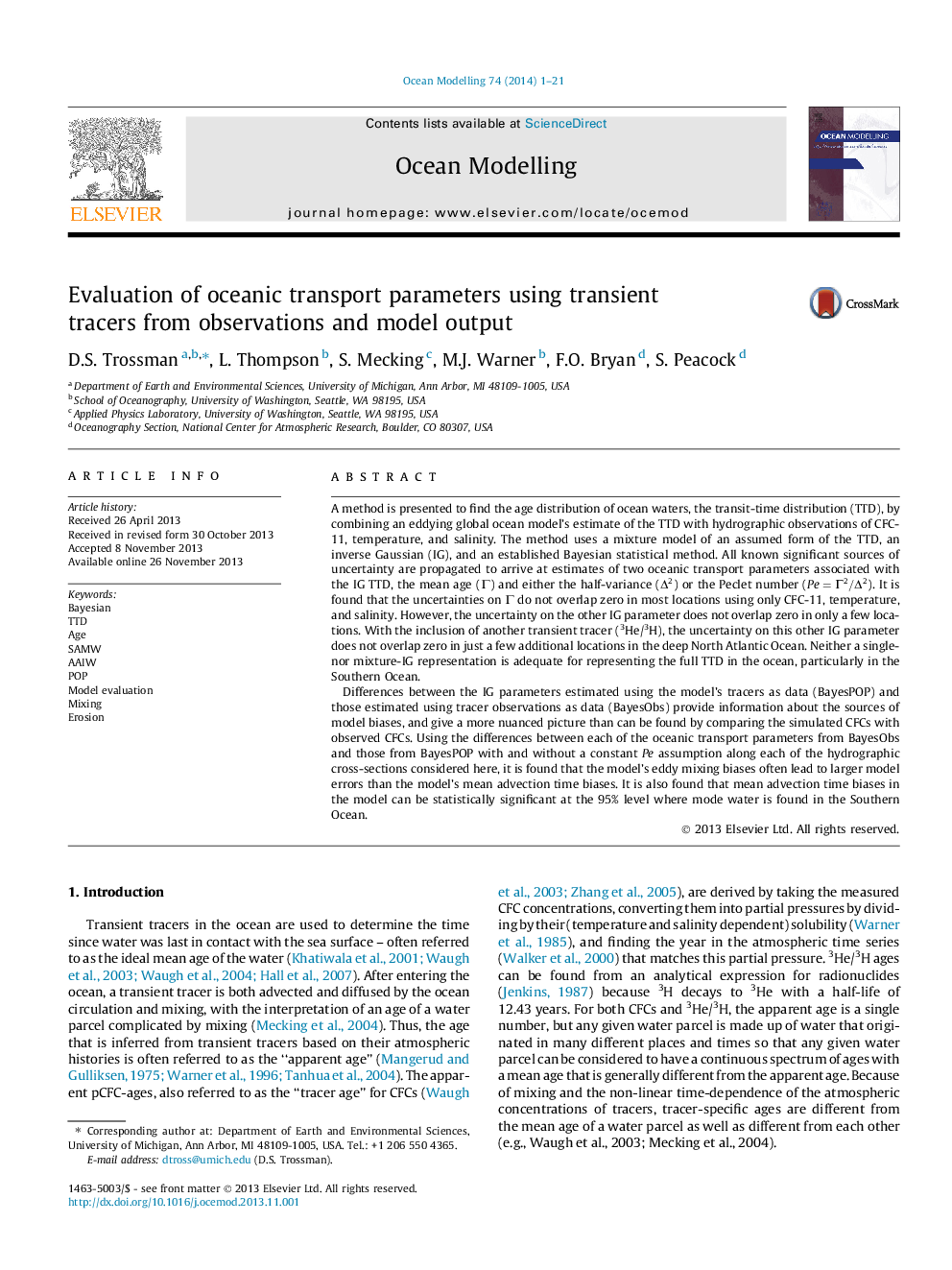| کد مقاله | کد نشریه | سال انتشار | مقاله انگلیسی | نسخه تمام متن |
|---|---|---|---|---|
| 4552068 | 1627774 | 2014 | 21 صفحه PDF | دانلود رایگان |
• Bayesian method to estimate a transit-time distribution (TTD) is presented.
• All known significant sources of uncertainty are taken into account.
• IG TTD is inadequate for representing the full TTD in the ocean.
• Mean ages are in significant error in POP where there is SAMW.
• Errors in mean ages cannot explain errors in POP in other IG parameter.
A method is presented to find the age distribution of ocean waters, the transit-time distribution (TTD), by combining an eddying global ocean model’s estimate of the TTD with hydrographic observations of CFC-11, temperature, and salinity. The method uses a mixture model of an assumed form of the TTD, an inverse Gaussian (IG), and an established Bayesian statistical method. All known significant sources of uncertainty are propagated to arrive at estimates of two oceanic transport parameters associated with the IG TTD, the mean age (Γ) and either the half-variance (Δ2Δ2) or the Peclet number (Pe=Γ2/Δ2Pe=Γ2/Δ2). It is found that the uncertainties on Γ do not overlap zero in most locations using only CFC-11, temperature, and salinity. However, the uncertainty on the other IG parameter does not overlap zero in only a few locations. With the inclusion of another transient tracer (3He/3H), the uncertainty on this other IG parameter does not overlap zero in just a few additional locations in the deep North Atlantic Ocean. Neither a single- nor mixture-IG representation is adequate for representing the full TTD in the ocean, particularly in the Southern Ocean.Differences between the IG parameters estimated using the model’s tracers as data (BayesPOP) and those estimated using tracer observations as data (BayesObs) provide information about the sources of model biases, and give a more nuanced picture than can be found by comparing the simulated CFCs with observed CFCs. Using the differences between each of the oceanic transport parameters from BayesObs and those from BayesPOP with and without a constant Pe assumption along each of the hydrographic cross-sections considered here, it is found that the model’s eddy mixing biases often lead to larger model errors than the model’s mean advection time biases. It is also found that mean advection time biases in the model can be statistically significant at the 95% level where mode water is found in the Southern Ocean.
Journal: Ocean Modelling - Volume 74, February 2014, Pages 1–21
